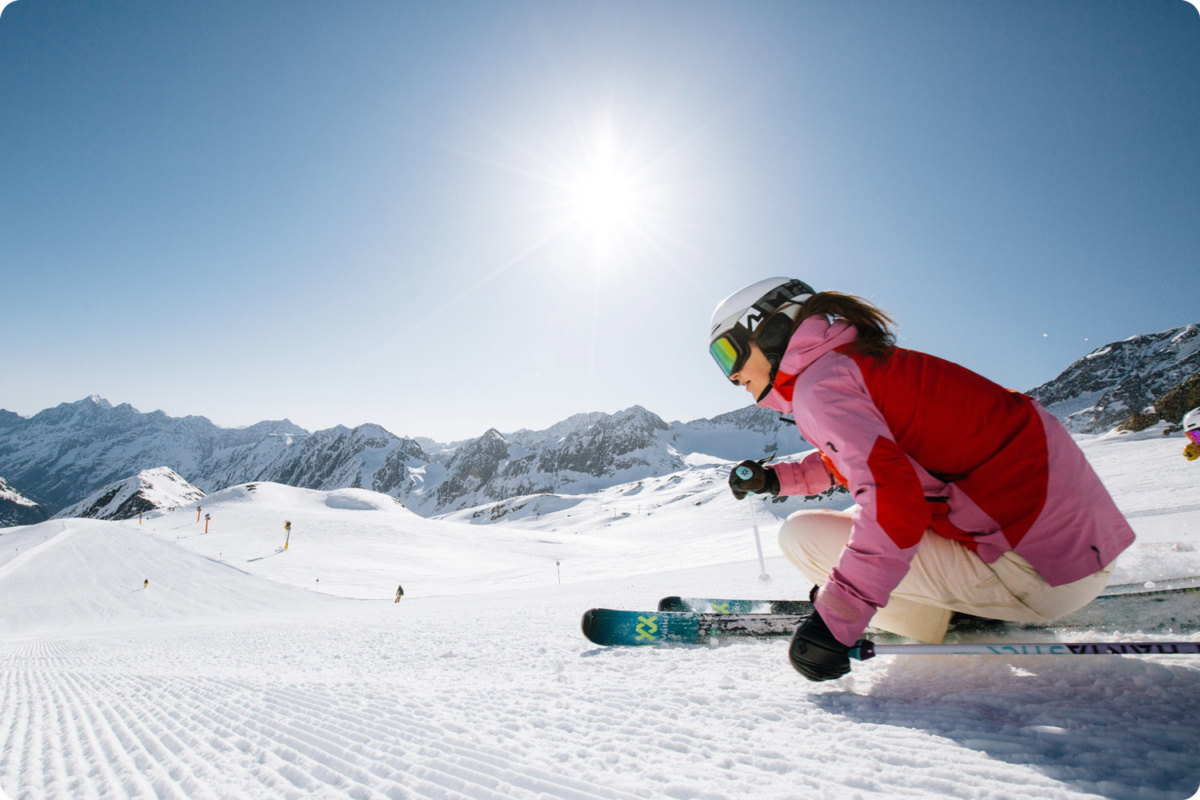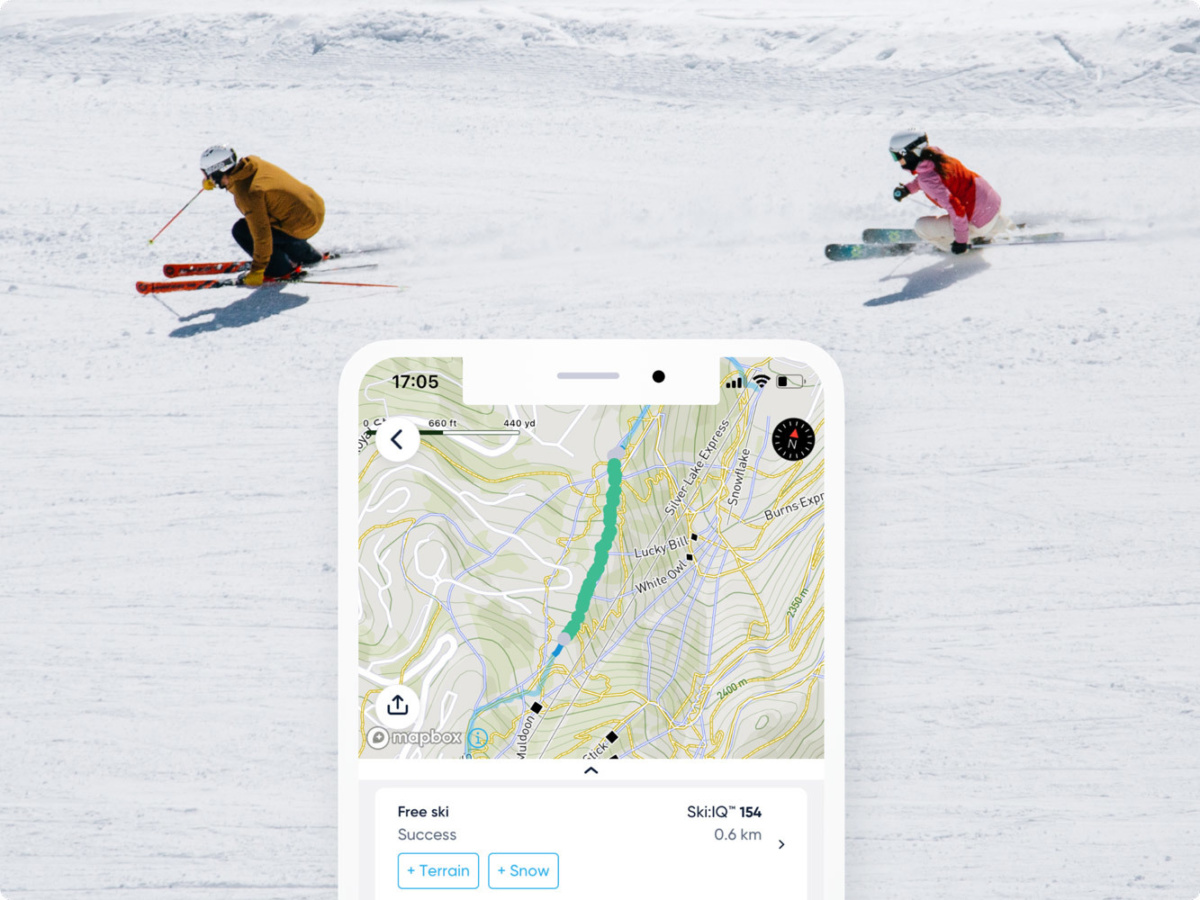Carv Labs: Developing a Smarter Ski:IQ for Skiing Steeps

Votes:
Have you ever watched a great skier carving down a steep and thought "How do they make it look so effortless?".
Great skiing looks easy, but underneath the surface, it's made up of complex, nuanced skills which take years to master, especially on steeps.
We designed the Ski:IQ™ scoring system to accurately capture the technical complexity of the most important skiing skills, and distil them into one simple score. But if you’ve ever taken a dive on the Carv leaderboard, you might notice that those at the top tend to be on greens and blues.
When you think of great skiing, what is it that comes to mind? Is it this...

... or something more like this?

Scoring a Ski:IQ™ score of 150 on a gentle slope is an incredible achievement, no doubt about it. But in skiing, the ability to hold your technique together as you hit harder terrain is what really separates the good from the great.
This year we set ourselves the challenge of recognising your best skiing - with a focus on rewarding you if you are skiing well when the terrain gets tougher.
Want to improve your skiing and get our best discount next season?
Picture the (steep) scene
It’s March 2022. The Carv team are lapping a slope with a shallow and steep section in Stubai, Austria, to attempt to set personal best Ski:IQ scores. A few of us managed PBs on the shallower pitch, but the slope ended with a short steep section. Here, most of our scores (and morale!) fell by at least ten points.
This wasn’t the case for Ulli, one of our Swiss Ambassadors (and a fantastic skier!), who maintained his 150+ scores even as the terrain became steeper. This demanded considerably more technical finesse, and we realised that he should be rewarded appropriately for his skill.
We see this same effect across our whole user base. Expert skiers can hold their high scores on more challenging runs, while the rest of us - to varying degrees - fall apart.
Bridget Jones demonstrates what can happen when we hit a steep we're not ready for...
Playing the Ski:IQ game in the right way
By rewarding great skiing on steeper terrains, we are striving for two big impacts:
To encourage you to ski steeps, and not feel like you need to stick to greens to get high scores (because let’s face it, that isn’t the most fun way to spend your day, and neither is it always the best way to improve).
Reward skiers who do maintain great technique on steeper pitches, giving them space to really flex their ability and show what they can do.
Digging into the data: The correlation between pitch and ability level
To see where we should start, Charlie (our lead Data Scientist) turned to the data of some of the best Carv skiers to investigate the relationship between slope pitch and the changing impact on Ski:IQ.
We are also looking at terrain type (bumps, crud, slush) as these affect technique as well, but pitch is a great first place to focus.
Luckily, we have one of the best steep skiers in the world as a Carv member, providing the perfect benchmark for the rest of us mortals. Ted Ligety (5 x world champion ski racer) thrives in steep conditions, achieving Ski:IQs of over 160 at a slope pitch angle of 22˚ (a steep blue in North America).
Even the best National Team skiers who use Carv typically see their Ski:IQs decrease as they get to slopes approaching 20 degrees.
In the graph below, you can see the relationship in Ski:IQ between Ted and the international demo team skiers using Carv.

Notice that Ted is impacted far less by steeper terrain.
And for the rest of us? Advanced skiers generally score their best in a pitch steepness window of 12-18 degrees, deteriorating on steeper slopes. Intermediates score best at 8˚-16˚, whilst beginners can only really get their best on slopes of below 16˚ steepness.
Our first (flawed) iteration
With analysis, we can see that talented skiers maintain higher scores on steeps. With this in mind, Data Science, Hardware and Software teams came together to explore solutions.
We started with our hardware. Each Carv insert is made of 36 pressure sensors and a motion sensor that sits under the arch of your foot. The motion sensor detects pitch, roll and yaw - the technical words for the data that informs the fundamentals of many of our metrics; from the amount you edge your turns (Edge Angle), to how parallel your skis are (Parallel Skis), and what your turn shape is (Turn Shape). We first wanted to understand if we could measure pitch on each turn by looking at this motion data.
The idea was to capture the pitch of the IMU as it reached the steepest point in the turn when we suspected the skier is facing downhill, and from there calculate the pitch. While it turned out that this works, it wasn’t accurate enough - especially for the highest performance turns.
Next, we wanted to look at the phones’ altitude sensors to determine slope gradient. But these just had too much noise in the data to maintain the standard we expect for Ski:IQ.
The third approach was our Goldilocks moment.
Perfecting pitch
Carv always knows where you’re skiing, based on your GPS which is mapped to our piste database. That’s how it creates and scores your segments. We were able to use this and 3rd party elevation data to find out the exact pitch of any specific run segment you just skied, with the benefit of minimal noise that comes from utilising a fixed data set.
Now this isn’t perfect. On those rare cambered slopes, Carv can’t tell the steep side from the more shallow side. Neither will we be able to detect the pitch of off-piste (yet) if you venture far from the closest run. But it’s an awesome starting point for a more context-aware Carv, and we’re really excited to put this into the system this season.

We use accurate GPS data to pinpoint exactly where you turn on every segment
So, what does this mean for your scores?
We’re still in the testing phase, so although our goal is for Ski:IQ to reward maintaining good technique on steeper slopes, exactly how this will look is yet to be determined. This week, Charlie is glacier skiing in Austria to ensure that our measurements are accurate; maintaining the integrity of our scoring system is always top of mind. If this iteration flies through initial quality testing, we’ll be beta testing in the southern hemisphere before we incorporate it into the Ski:IQ algorithm for the coming season.
Alongside this, we’re working on making a few other tweaks to the algorithm that we’re excited to share - including terrain detection and snow condition adjustment. But those will have to wait for another update. In the longer run, we hope to move towards an even smarter Ski:IQ which will gamify improvement all over the mountain. Watch this space.
If you want to join our testing program for the new pitch-adjusted Ski:IQ and you’re skiing in the southern hemisphere in July/August, get in touch with us today.